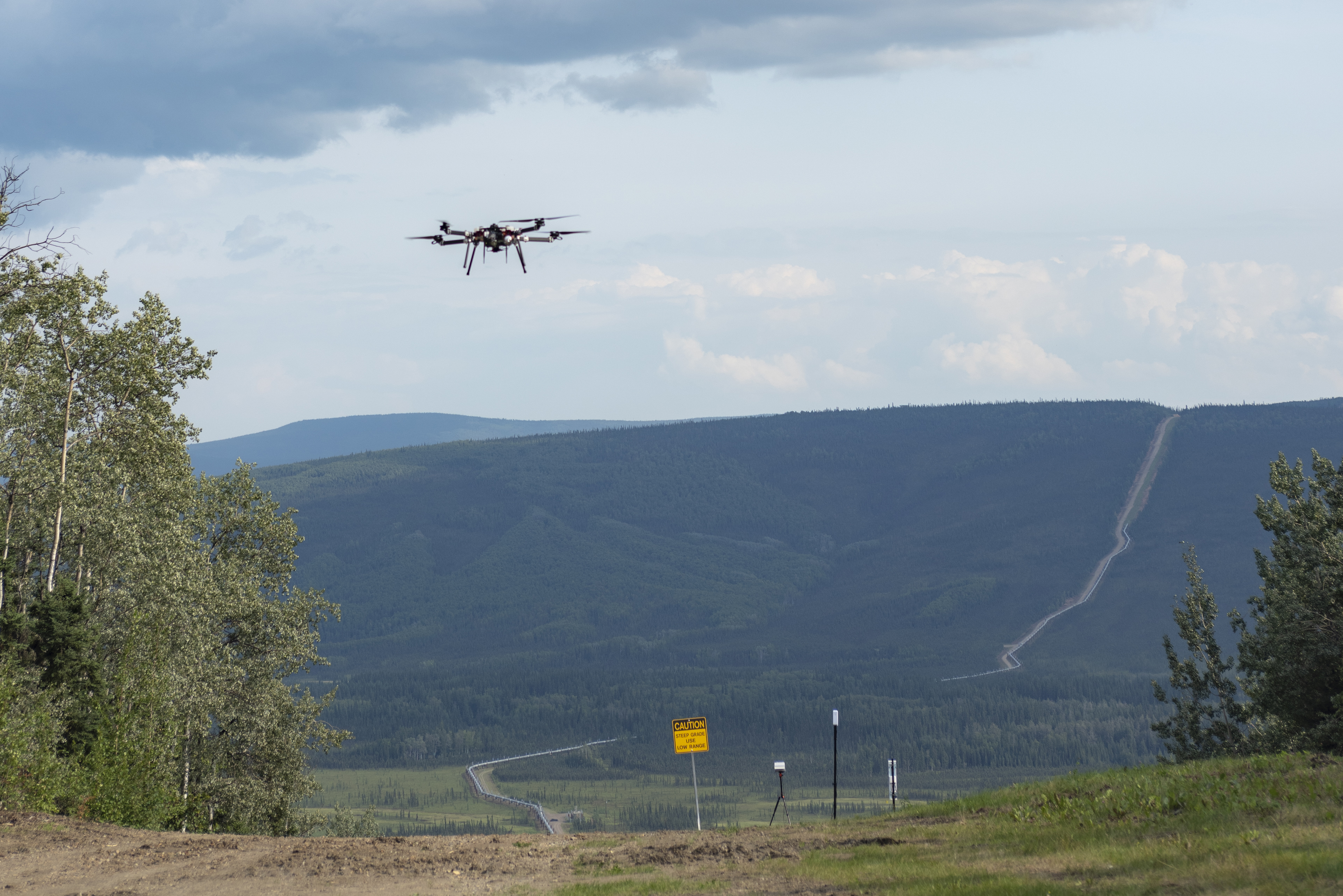How a recent Alaska test flight could transform the Arctic
Drone flight beyond line of sight could play especially important roles in the Far North.

Earlier this summer, an aircraft took off from a remote spot in Interior Alaska not far far south of the Arctic Circle, climbed to an altitude of nearly 400 feet and flew north in hilly terrain along the trans-Alaska pipeline.
Equipped with four rotors that allowed it to both hover and to ascend and descend as it navigated above 45-degree slopes, the hybrid plane was under close observation at all times — but not directly with a human eye.
After about 4 miles, the small craft turned around and flew back at about 15 mph, landing at 2:59 p.m. on July 31.
The half-hour flight marked an important milestone in the history of civilian aviation in the United States.
“It was an incremental step, but an important one in extending the limits of unmanned aviation,” said Cathy Cahill, director of the Alaska Center for Unmanned Aircraft Systems Integration.
She said this is one of a series of test flights that is all about the “safe integration of unmanned aircraft in the national airspace.”
Unmanned military aircraft fly beyond the line of sight of ground personnel all the time in restricted airspace, but it’s a different matter in the civilian world.
The aircraft that flew that day north of Fairbanks was a Perimeter 4 drone, which weighs about 33 pounds when fully loaded. It made the first authorized civilian flight in the U.S. in which the plane flew beyond the point at which the pilot could see it in the air.
The pilot for the test flight was Troy Mestler, CEO of the manufacturer, a California company called Skyfront. He controlled the aircraft from inside a trailer set up at the launch site where he flew it by instruments, much as a pilot in a manned aircraft would do.
The weather was perfect that day and the flight went off without a problem, said Nick Adkins, director of operations for the Alaska unmanned aircraft center in Fairbanks.
All the observations of the aircraft were made through electronic means, a demonstration of what lies ahead.
The route took the drone above the trans-Alaska pipeline because that essential piece of Alaska infrastructure is a prime candidate for future aerial monitoring by unmanned aircraft.
For decades the pipeline has been inspected daily by helicopters, which are expensive — and sometimes dangerous — to fly. For economics and safety, there are incentives to perfect the technology to someday replace the helicopters with small drones.
“This innovative step forward will advance safe performance not just in our industry, but in multiple disciplines and workspaces across the country,” Tom Barrett, president of Alyeska Pipeline Service Co., which operates the trans-Alaska pipeline system, said in a statement.
Cahill said the industry is one in which the proponents will have to crawl before they can walk or run, proving to federal authorities with each move that the technology is reliable.
The unmanned aircraft put to the pipeline test is equipped with computer software so that it will detect and evade other aircraft, if and when they get within certain distances.
This was the first time that the aviation regulators signed off on the use of detect-and-avoid technology, albeit under tightly controlled circumstances.
Cahill said that demonstrating to the Federal Aviation Administration that this can be done safely with pilots on the ground using electronic controls, is the challenge going ahead.
“There is still a pilot in the loop,” said Adkins. “It’s just that the pilot is on the ground, controlling the aircraft and making adjustments as required.”
The Alaska center continues to do work in Canada on perfecting long-distance unmanned flights along the St. Lawrence Seaway and north of Inuvik, Cahill said.
Cahill and Adkins are among those who believe that such flights will soon become routine, as the technology advances and is put to practical use in the Arctic for everything from cargo delivery to search-and-rescue missions, wildfire mapping and infrastructure monitoring.
Dermot Cole can be reached at [email protected].